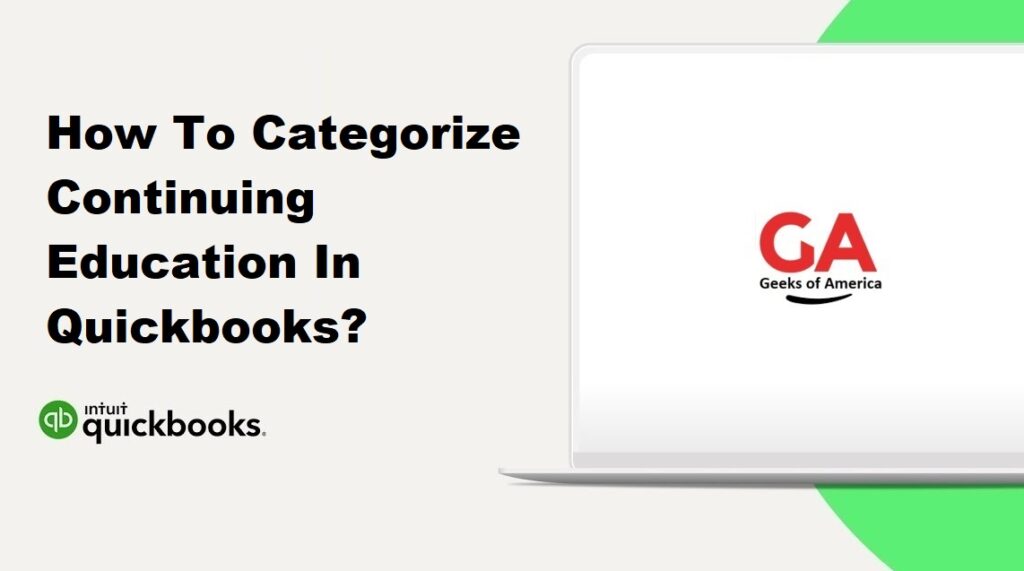
I. Introduction
Categorizing continuing education expenses in QuickBooks helps you accurately track and manage the costs associated with professional development and educational activities. Properly categorizing these expenses allows for better financial reporting and analysis. In this guide, we will walk you through the step-by-step process of categorizing continuing education expenses in QuickBooks.
Read Also : How To Set Up Shareholder Distribution In Quickbooks?
II. Understanding Continuing Education Expenses
Before we begin, it’s important to understand the types of expenses that fall under continuing education:
- Tuition Fees:
- This includes the cost of enrolling in courses or programs offered by educational institutions or professional development organizations.
- Course Materials:
- These expenses cover textbooks, study guides, online learning materials, and any other materials required for the educational program.
- Travel and Accommodation:
- If you need to travel or stay overnight to attend the educational program, the expenses related to transportation, lodging, and meals can be categorized under this category.
- Registration and Membership Fees:
- These fees cover the cost of joining professional associations, attending conferences, or participating in workshops or seminars.
Read Also : How To Record Section 179 Depreciation In Quickbooks?
III. Setting up Expense Accounts
Before categorizing continuing education expenses, you need to set up appropriate expense accounts in QuickBooks to track these costs. Follow these steps:
- Open QuickBooks and go to the “Lists” menu.
- Select “Chart of Accounts” to open the Chart of Accounts window.
- Click on the “Account” drop-down arrow and choose “New” to create a new account.
- Select “Expense” as the account type.
- Enter a name for the account, such as “Continuing Education – Tuition Fees.”
- Repeat the process to create additional expense accounts for other categories, such as “Continuing Education – Course Materials” and “Continuing Education – Travel Expenses.”
- Click on the “Save & Close” button to save the accounts.
Read Also : How To Create A Payment Receipt In Quickbooks Desktop?
IV. Categorizing Continuing Education Expenses
Once you have set up the expense accounts, you can categorize your continuing education expenses in QuickBooks. Follow these steps:
- Open QuickBooks and go to the “Banking” menu.
- Select “Write Checks” or “Enter Bills” depending on how you paid for the expense.
- Enter the payee, date, and amount of the expense.
- In the “Account” field, select the appropriate expense account you created for the type of expense (e.g., “Continuing Education – Tuition Fees”).
- Provide a description of the expense in the “Memo” field.
- If necessary, select a customer or job associated with the expense.
- Click on the “Save & Close” button to save the transaction.
- Repeat the process for each continuing education expense you want to categorize.
Read Also : How To Make/Create Journal Entries In Quickbooks Desktop?
V. Reporting on Continuing Education Expenses
QuickBooks provides various reports that can help you analyze and track your continuing education expenses. Here are a few commonly used reports:
- Profit and Loss Statement:
- Go to the “Reports” menu and select “Company & Financial.”
- Choose “Profit & Loss Standard” to open the report.
- Customize the report to include the appropriate date range and expense accounts.
- Look for the accounts related to continuing education expenses to see the total amount spent.
- Expense by Vendor Summary:
- Go to the “Reports” menu and select “Vendors & Payables.”
- Choose “Expense by Vendor Summary” to open the report.
- Customize the report to include the appropriate date range and expense accounts.
- Look for the vendors associated with continuing education expenses to see the total amount paid to each vendor.
Read Also : How To Make/Create A Journal Entry In Quickbooks Online?
VI. Conclusion
Categorizing continuing education expenses in QuickBooks allows for accurate tracking and reporting of these costs, providing valuable insights into your professional development expenses. By following the step-by-step instructions provided in this guide, you can set up the appropriate expense accounts, categorize your continuing education expenses, and generate relevant reports to track and analyze the expenses. Properly categorizing continuing education expenses in QuickBooks helps you stay organized and make informed financial decisions regarding your professional development activities.
